Modern Living Room; In today’s fast-paced world, our homes should serve as sanctuaries—places where we can unwind and recharge. The living room, often the heart of the home, plays a crucial role in creating this atmosphere. Modern design, with its clean lines, functional layouts, and aesthetic appeal, provides an ideal framework for a contemporary haven. In this article, we’ll explore 16 inspiring ideas to help you create a modern living room that balances style, comfort, and functionality.
1. Color Palette
1] Neutral Tones

A modern living room often begins with a soothing color palette. Neutral tones—such as whites, grays, beiges, and taupes—create a calm and sophisticated backdrop. These shades allow for versatility in design and provide a serene environment. Layer different textures within this palette to add depth and interest. For example, consider a soft cream sofa paired with a chunky knit throw and a sleek wool rug.
Neutral tones work well with both traditional and modern design elements, offering a seamless foundation for various styles. To prevent the space from feeling too plain, mix in subtle patterns such as herringbone or geometric prints. Accent pieces in natural materials—like a jute rug or woven baskets—can bring warmth and character. Don’t underestimate the power of off-whites and greige, which add sophistication without being stark. Layering these tones thoughtfully creates a timeless ambiance that feels effortlessly chic.
2] Bold Accents
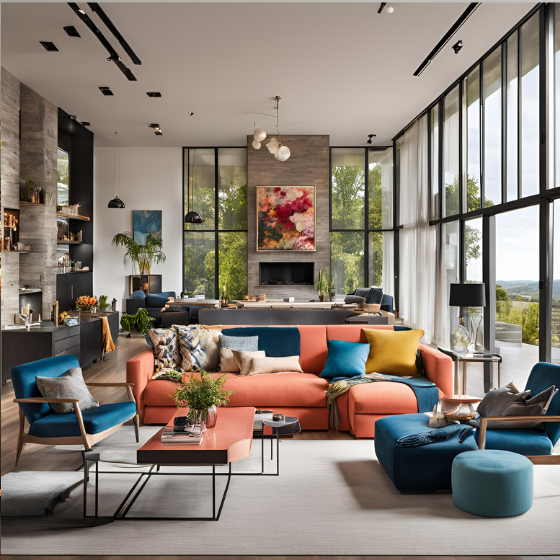
While neutrals serve as a base, adding pops of color can breathe life into your space. Think vibrant cushions, a striking piece of art, or a colorful area rug. Colors like deep teal, mustard yellow, or even rich burgundy can create focal points and energize the room. When selecting accent colors, consider the overall mood you want to evoke—warm colors can create a cozy atmosphere, while cooler tones offer a refreshing vibe.
The beauty of bold accents is their flexibility—you can change them out seasonally or with trends. Throw pillows, vases, and even lamp bases can introduce color without overwhelming the space. If you’re more adventurous, consider a painted accent wall or a bold piece of furniture like a cobalt blue armchair. Try to repeat the accent color at least three times in the room for visual cohesion. This keeps the room grounded while still offering visual excitement.
2. Furniture Selection
3]Minimalist Furniture
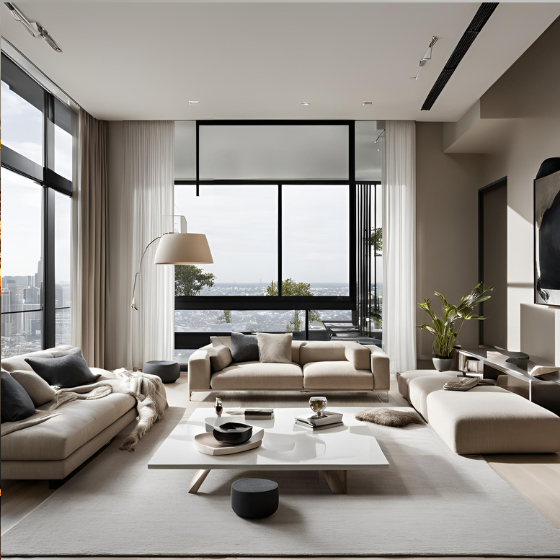
Modern design is often characterized by minimalist furniture that emphasizes simplicity and function. Look for pieces with clean lines, sleek profiles, and an uncluttered aesthetic. A low-profile sectional or a streamlined coffee table can enhance the spaciousness of the room. When selecting furniture, consider how each piece contributes to the overall flow of the space, ensuring that it complements rather than overwhelms.
Minimalist furniture doesn’t mean boring—it’s about selecting pieces that make an impact through form and quality. Consider materials like matte metal, clear acrylic, or smooth lacquer finishes for a refined touch. Low-profile sofas with slim arms can create a more open feel, especially in small spaces. Negative space becomes a design element here, so avoid overcrowding. A few well-chosen pieces will shine more than a cluttered room full of furniture.
4]Multifunctional Pieces
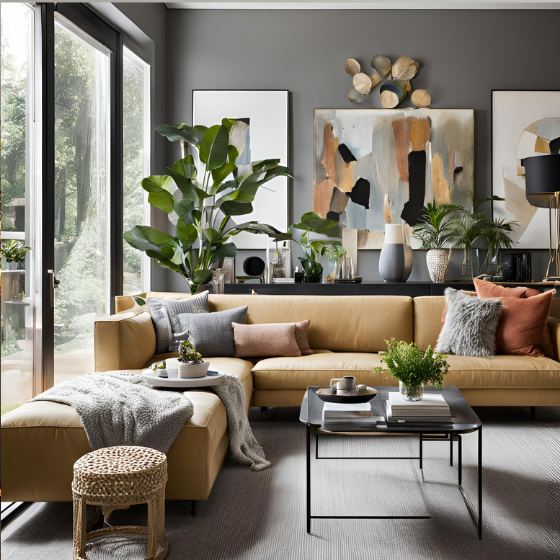
In contemporary living, functionality is key. Invest in multifunctional furniture to maximize your space. Items like ottomans with hidden storage, convertible sofa beds, or nesting tables can adapt to various needs. This not only keeps your living room organized but also ensures it remains flexible for gatherings, relaxation, or even impromptu game nights.
These pieces are perfect for smaller homes or apartments where every square foot matters. A storage bench can double as extra seating, while a fold-out desk can create a home office in a corner. Look for coffee tables with shelves or ottomans with trays for drinks and snacks. This approach marries form and function, allowing you to keep a modern aesthetic while staying organized. The key is to choose pieces that blend into your decor while offering hidden utility.
3. Layout and Space Planning
5] Open Concept Layout
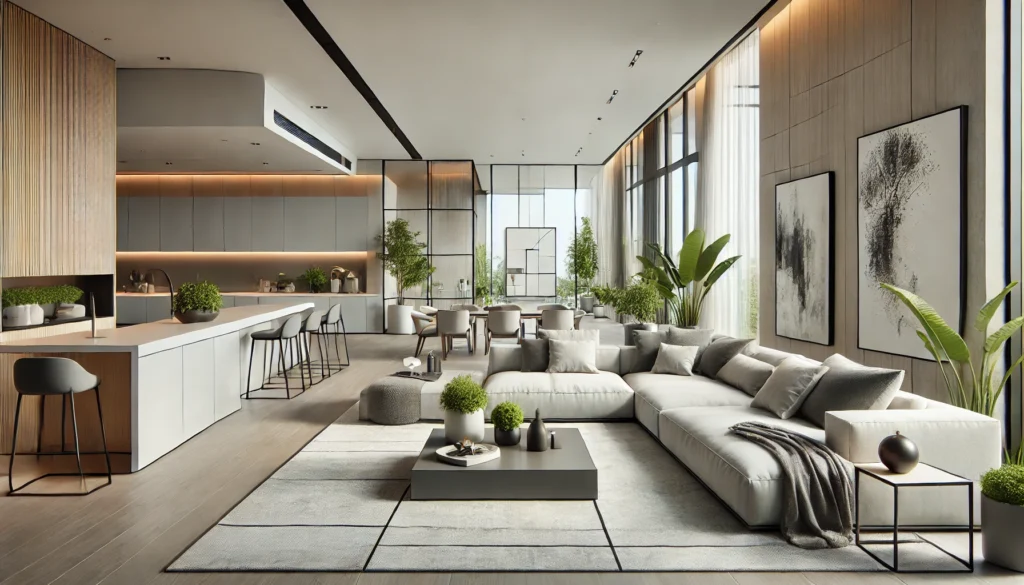
An open concept layout is a hallmark of modern living spaces. By eliminating unnecessary walls, you create a seamless flow between the living room and adjoining areas, such as the kitchen or dining room. This design not only enhances social interaction but also makes the space feel larger. To maintain functionality, consider using furniture placement to define areas while keeping the openness intact.
Furniture becomes your architectural element in an open layout. Use a sofa to act as a “soft wall,” separating the living area from a dining space without closing it off. Keep flooring consistent throughout to enhance the feeling of unity. Use a consistent color palette across the different zones for a cohesive look. This type of layout encourages easy movement and fosters a communal atmosphere.
6] Zoning Areas
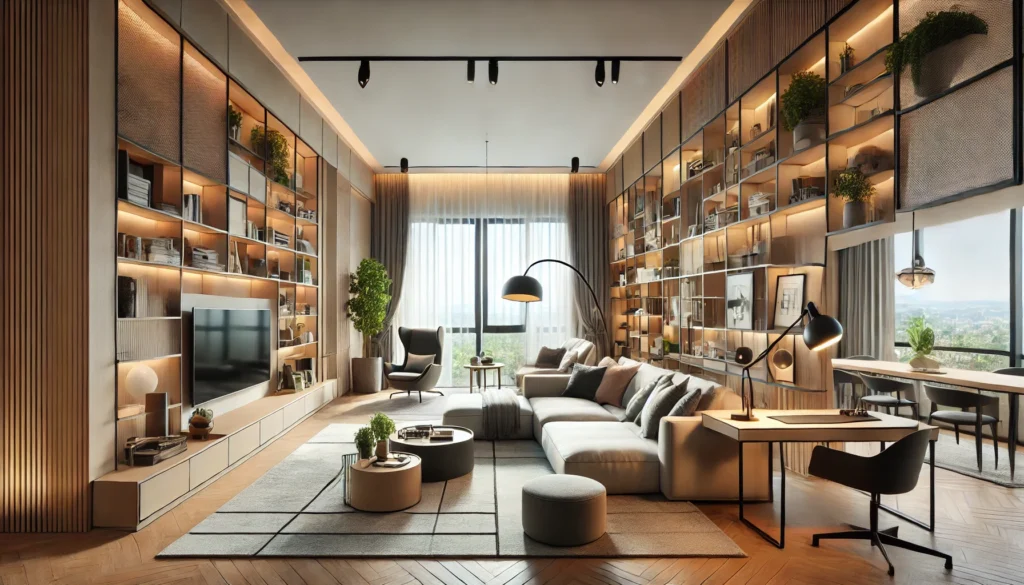
Even in an open layout, creating defined zones can enhance the overall experience. Use area rugs to delineate spaces, such as a cozy reading nook or a conversation area. Furniture placement plays a crucial role here; arrange sofas and chairs to facilitate conversation while maintaining an airy feel. Adding lighting features, such as floor lamps or pendant lights, can also help distinguish different areas within your living room.
Zoning is especially useful for multifunctional living spaces where work, relaxation, and entertainment all happen. Try incorporating open shelving as a visual divider that doesn’t block light or flow. You can also use paint or wallpaper to distinguish a section of the wall behind a desk or reading chair. This allows each area to feel intentional while maintaining an open-plan aesthetic. The result is a space that feels spacious yet thoughtfully structured.
4. Textures and Materials
7] Mixing Materials
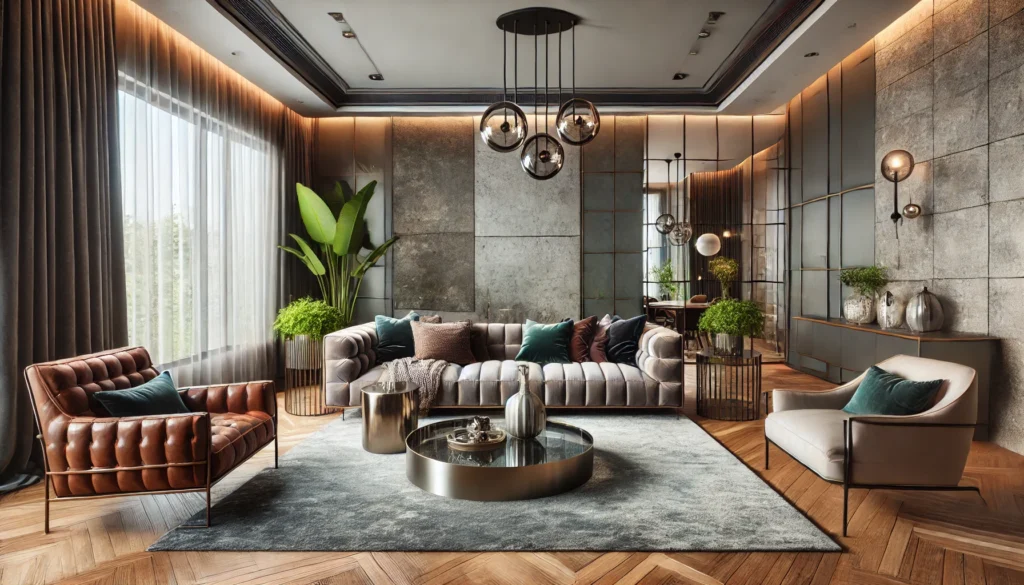
One of the joys of modern design is the opportunity to play with various materials. Combining wood, metal, and textiles can create a dynamic visual experience. For instance, a wooden coffee table can be paired with metal accent chairs and soft fabric cushions. When mixing materials, aim for balance—if your furniture is predominantly soft, consider adding a few hard surfaces to create contrast and depth.
Balance is essential when combining contrasting textures and finishes. If you feature a lot of wood, bring in metal elements like brass light fixtures or chrome legs on tables to keep it fresh. Glass pieces can lend a sense of lightness, especially in tight spaces. Incorporate soft items like throws, cushions, and rugs to soften the hard edges of metal or stone. A well-executed mix of materials creates a tactile and visually rich environment.
8] Statement Walls
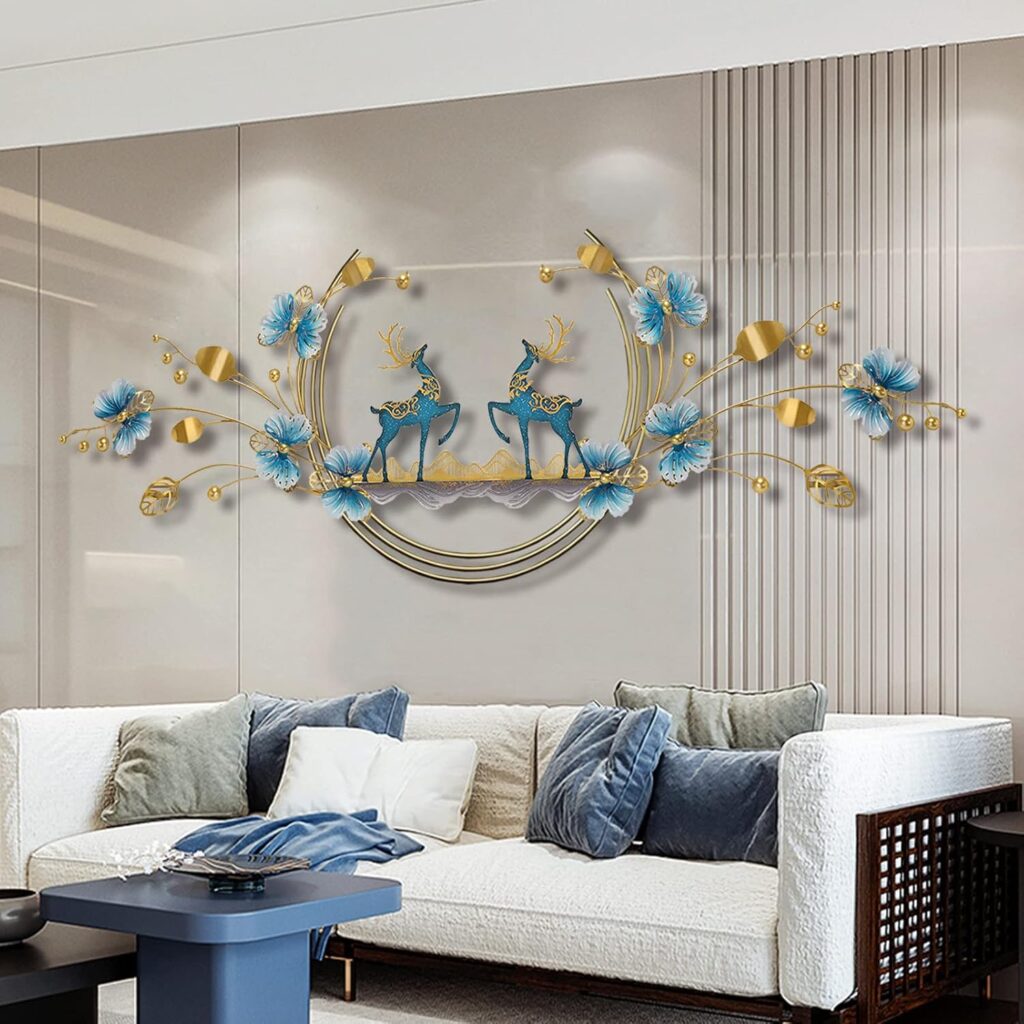
A statement wall can serve as a captivating focal point in your living room. Consider using bold wallpaper, a fresh coat of paint in an eye-catching hue, or textured materials like reclaimed wood. Geometric patterns or abstract art can enhance the modern aesthetic. This not only draws attention but also adds personality to your space, making it uniquely yours.
Statement walls can reflect your personality and set the tone for the rest of the room. You might opt for a deep navy or forest green to add drama, or a mural depicting a natural scene for serenity. Materials like brick, shiplap, or concrete also provide texture and depth. If you’re renting or not ready for commitment, peel-and-stick wallpaper is a great temporary solution. Let the statement wall anchor the space by keeping the rest of the decor understated.
5. Lighting Design
9] Statement Lighting Fixtures
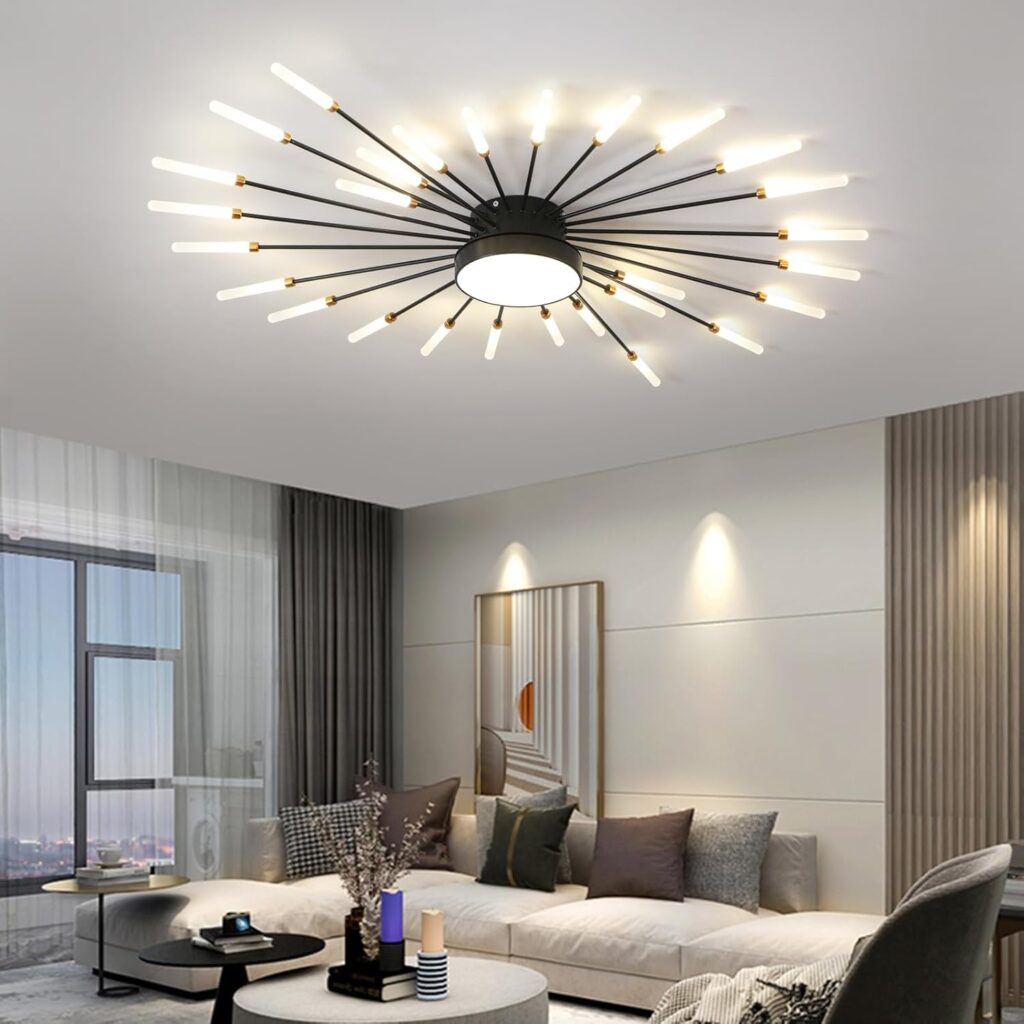
Lighting is a crucial element in modern design, and choosing the right fixtures can dramatically impact the ambiance. Consider bold statement pieces like oversized pendant lights or sculptural floor lamps that serve as works of art. These fixtures can add character and serve as conversation starters, all while providing necessary illumination for your space.
Opt for lighting that blends art with function—think asymmetrical chandeliers or minimalist LED designs. Position lighting to highlight architectural features, artwork, or reading zones. Dimmers allow you to adjust the mood, making the space more versatile. In small rooms, a dramatic ceiling fixture can draw the eye upward, adding perceived height. Always ensure your lighting choices align with the room’s overall scale and design language.
10] Natural Light Maximization

Maximizing natural light is essential in creating a bright and airy living room. Choose window treatments that allow light to flow in, such as sheer curtains or blinds that can be fully opened. Mirrors can also be strategically placed to reflect light and create the illusion of more space. Incorporating skylights or large windows can enhance this effect, connecting your indoor living space with the outside world.
Furniture placement can significantly affect how light moves through your room. Avoid blocking windows with bulky pieces, and use translucent furniture when possible. Choose reflective surfaces like glossy side tables or mirrored frames to bounce light around. Even wall color plays a role—lighter shades amplify brightness, especially in north-facing rooms. Strategic use of natural light enhances both comfort and visual appeal.
6. Decor and Accessories
11] Art and Sculptures
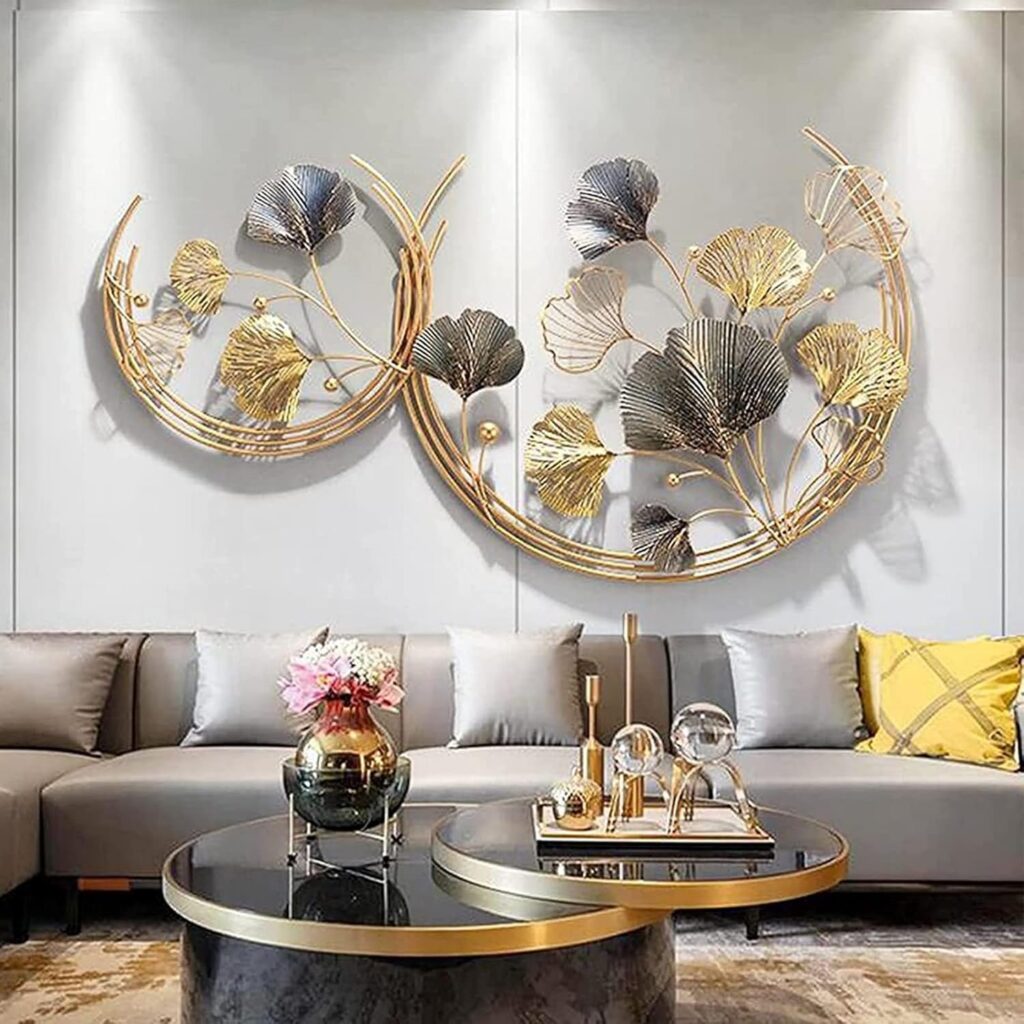
Modern living rooms thrive on artistic expression. Select modern art pieces or sculptures that resonate with your personal style. Whether it’s a large canvas above the sofa or a collection of smaller pieces arranged in a gallery style, art can elevate the overall aesthetic. When hanging art, consider the height and arrangement to create visual harmony and balance within the space.
Art can also serve a functional purpose by influencing the mood of the room. Abstract pieces in calming tones can evoke tranquility, while bold, dynamic works energize the space. Don’t limit yourself to walls—consider freestanding sculptures or art leaned casually against a console table. Rotate your art seasonally to keep the room feeling fresh and inspiring. This allows you to experiment with style without making permanent changes.
12] Greenery and Indoor Plants
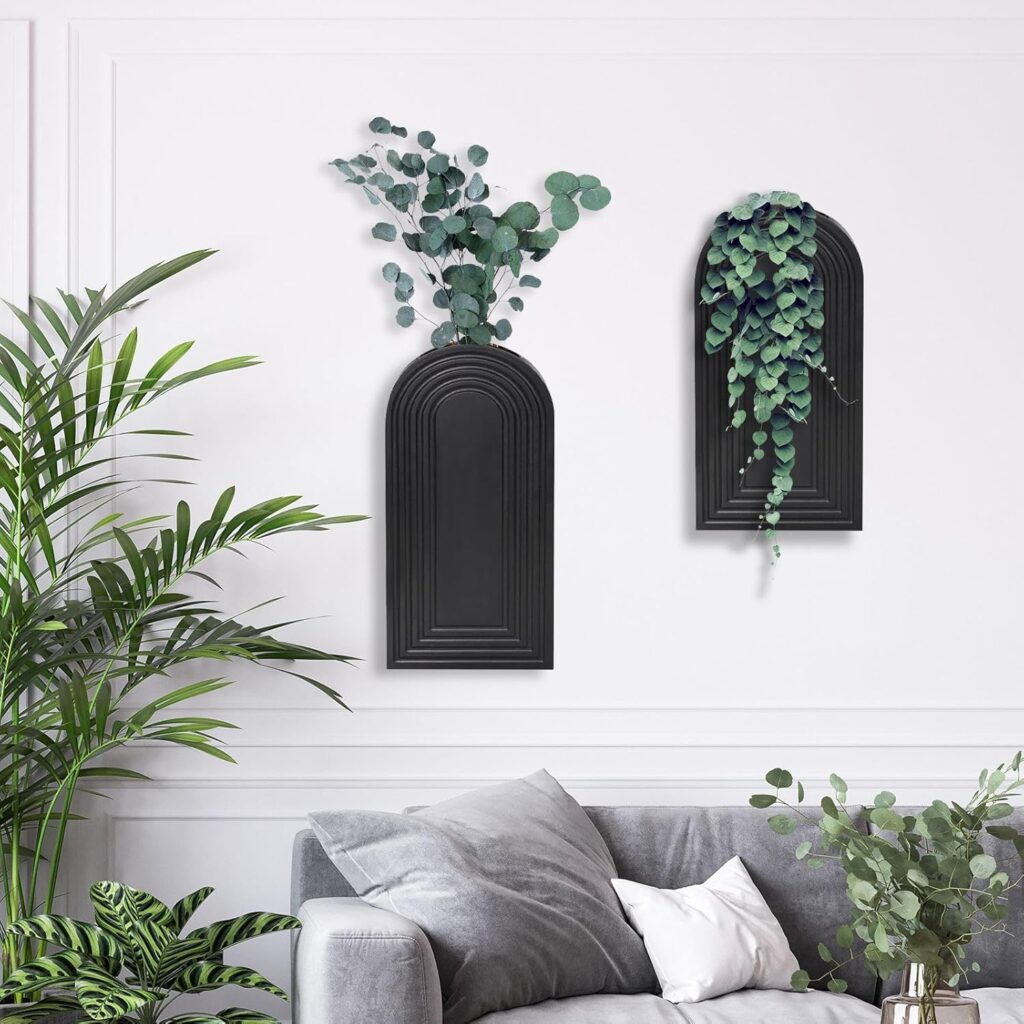
Bringing nature indoors adds freshness and vibrancy to your living room. Incorporate greenery with indoor plants that thrive in low light, such as snake plants or pothos. A stylish planter can serve as a decorative piece while improving air quality. Arrange plants at varying heights to create visual interest, or consider a statement tree, like a fiddle leaf fig, to serve as a focal point.
Layering plants with varying textures—like the waxy leaves of a ZZ plant and the feathery fronds of a fern—adds lushness. Place plants near windows or in corners that need softening. Hanging planters can utilize vertical space and add height to your design. Use plant stands to create tiered groupings for a curated, organic look. The greenery not only boosts your decor but also enhances your mental well-being.
7. Technology Integration
13] Smart Home Features

Incorporating smart home technology enhances convenience and modernity in your living space. Consider smart speakers, automated lighting systems, or programmable thermostats that can be controlled via your smartphone. This not only adds a contemporary touch but also streamlines daily living, making your space both functional and tech-savvy.
Smart lighting can be set on timers or customized to suit different moods and times of day. Consider a smart thermostat that adjusts based on your routine for optimal comfort and energy efficiency. You can also integrate voice assistants for hands-free control of lights, music, and even security. These upgrades are increasingly affordable and can be added incrementally. Best of all, they enhance daily convenience without sacrificing design.
14] Entertainment Centers
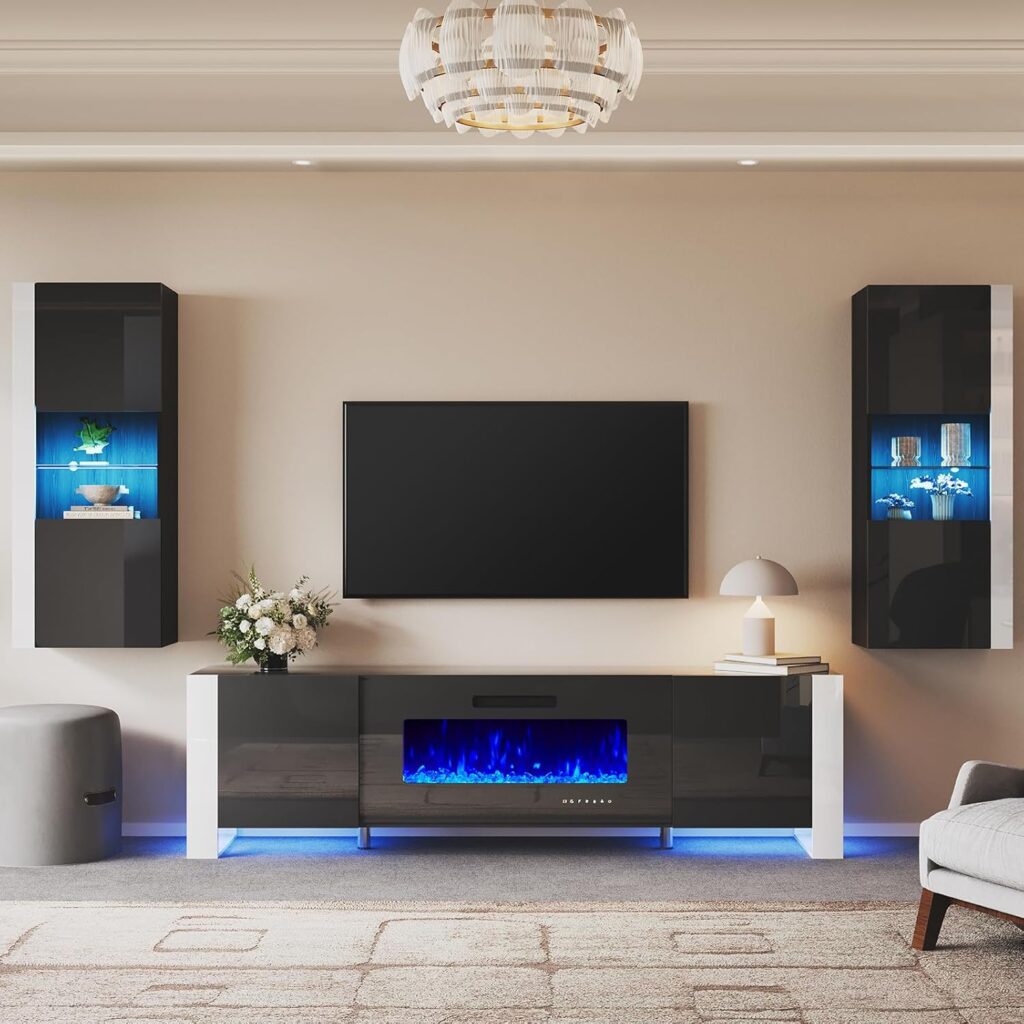
Designing a sleek, modern entertainment area can elevate your living room experience. Choose low-profile cabinets to house media equipment and keep wires organized. Wall-mounted TVs can free up space while allowing for a clean, uncluttered look. Don’t forget to integrate sound systems seamlessly into the decor, ensuring that entertainment remains a key part of the modern living experience.
Use minimalist shelving or wall-mounted consoles to reduce clutter and showcase select decor items. Hide unsightly cords with cable organizers or in-wall solutions for a cleaner look. Consider incorporating acoustic panels disguised as art for superior sound without disrupting aesthetics. Built-in lighting within shelves can create ambiance while highlighting key pieces. This fusion of style and practicality makes your entertainment zone a seamless part of the room.
8. Personal Touches
15] Personalized Decor

Infuse your personality into your living room through decor that reflects your unique style. Incorporate family photos in stylish frames, travel souvenirs displayed on shelves, or heirlooms that tell your story. This personalization not only makes the space feel more inviting but also fosters a connection to your memories and experiences.
Layering your story into the room fosters comfort and authenticity. Shadow boxes for souvenirs or custom prints of meaningful quotes can serve as subtle but significant touches. Arrange personal items thoughtfully so they complement rather than clutter the space. Mix modern pieces with personal ones to create balance and depth. These curated elements ensure your living room feels lived-in and loved.
16] Seasonal Decor
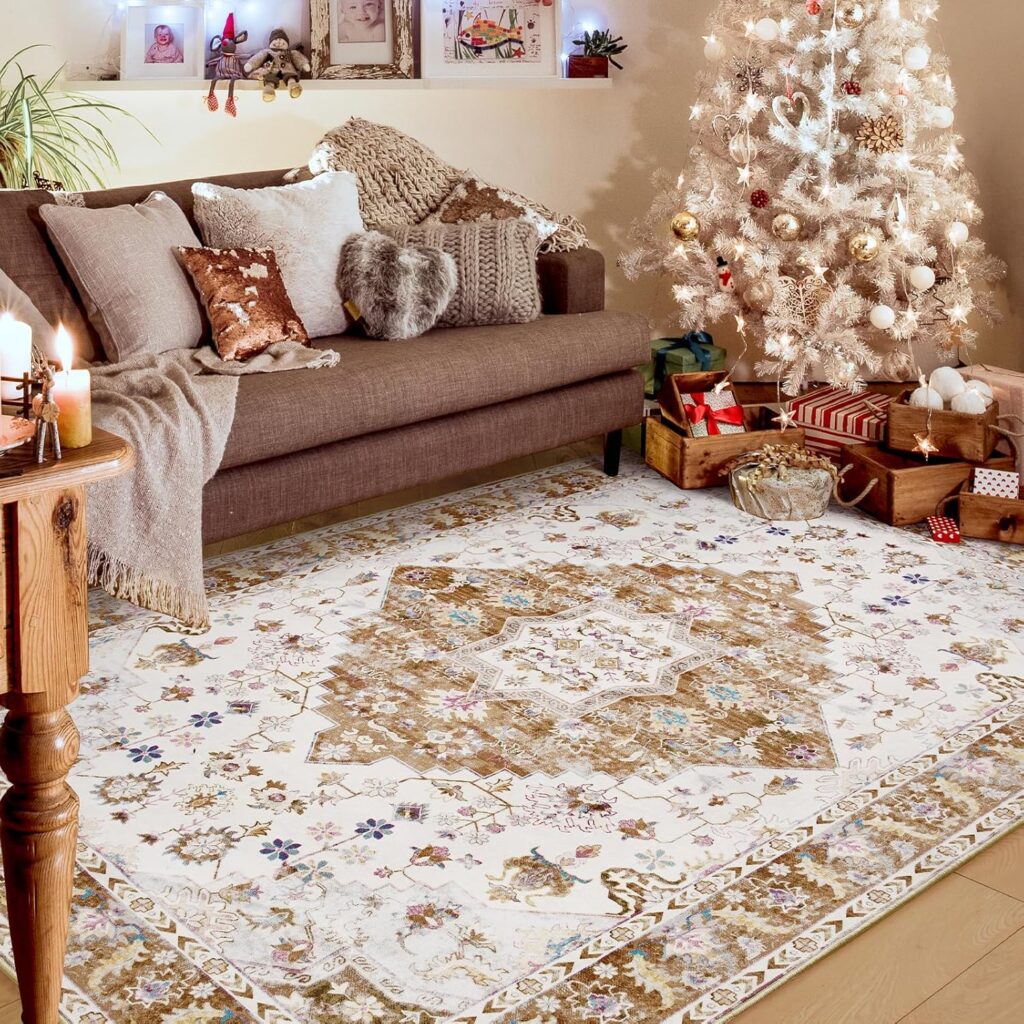
Updating your living room decor for different seasons is a simple way to keep the space feeling fresh and inviting. Consider swapping out throw pillows, blankets, or artwork to reflect seasonal colors and themes. In fall, warm hues and cozy textiles can enhance the atmosphere, while bright colors and light fabrics can invigorate the space in spring. These subtle changes can create a dynamic living room that evolves with the seasons.
Subtle shifts—like a wool throw in winter or linen cushions in summer—can change the room’s whole vibe. Incorporate seasonal centerpieces or garlands on mantels for added charm. A simple bowl of pinecones or a vase of fresh tulips can reflect the time of year with ease. Consider keeping a storage bin for off-season decor to rotate items effortlessly. This habit keeps your living room feeling current and continually inspired.
Conclusion
Creating a modern living room that serves as a contemporary haven requires thoughtful consideration of design elements, color palettes, and personal touches. By implementing these 16 ideas, you can transform your space into a stylish, functional retreat that meets your needs and reflects your personality. Remember, the key is to find a balance between aesthetics and comfort, allowing your living room to be both beautiful and inviting.
As you embark on this journey to enhance your living space, embrace experimentation. Don’t be afraid to mix styles or try new ideas—your living room should be a true reflection of who you are. We invite you to share your living room transformations or your favorite modern decor ideas in the comments below.

